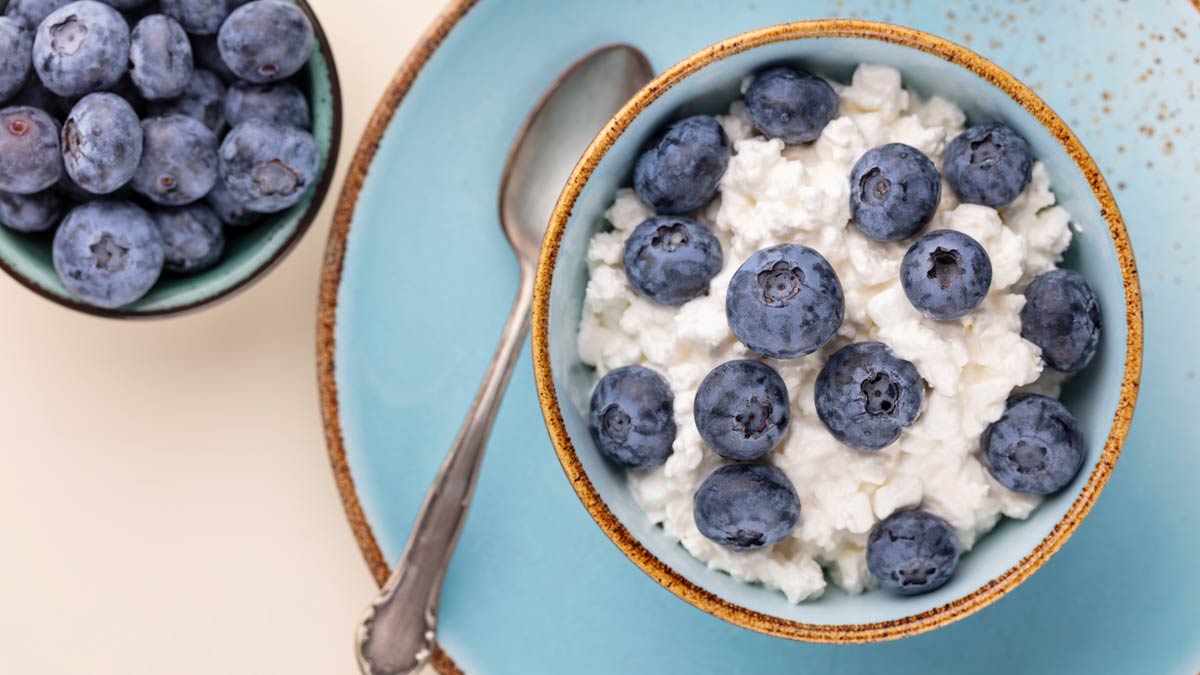
The resulting cheese is a high-volume, low-calorie food that’s also high in protein. A half-cup serving of full-fat (called 4% milk fat) plain cottage cheese has about 116 calories, 14 grams of protein, and 3 grams of saturated fat. Flavored cottage cheese can contain added sugars and is higher in calories than plain varieties. Check the label: Added sugars can be as little as 5 grams (about a teaspoon) to as much as 14 grams (3.5 teaspoons) per serving.
The protein in cottage cheese makes it filling, so it may help in weight loss. For example, a small study published in 2015 in the journal Appetite found that cottage cheese suppressed hunger as much as eggs, which some nutritionists recommend as a more filling alternative to carb-heavy breakfasts like cereal and bagels.
A half-cup of full-fat cottage cheese also packs 14 percent of the daily value for phosphorous, which your body uses to process energy, nearly a third of your body’s need for vitamin B12, a nutrient that helps keep nerves and blood cells healthy, and about 8 percent of your daily calcium requirement.
Sodium is cottage cheese’s one nutritional negative. Salt is added as a preservative because cottage cheese is high in moisture, says Tonya Schoenfuss, PhD, an adjunct associate professor of dairy products technology at the University of Minnesota. You can end up with as much as 450 mg of sodium per half-cup. (The daily sodium recommendation is less than 2,300 mg.) So look for brands labeled low-sodium or less sodium, such as Breakstone’s 2% small curd 45% less sodium cottage cheese, which has 200 mg of sodium (9 percent of the daily limit) in a half cup. There are no-salt-added options as well, with as little as 45 mg in half a cup. These can taste bland, but you can perk them up with fruit, diced veggies, or spices and herbs such as cinnamon or dill.
Some companies boast that their cottage cheese contains “live and active cultures.” That can be a benefit because probiotic bacteria are good for your digestive tract. But check the labels: While these bacteria are necessary to turn milk into yogurt, they aren’t needed to make cottage cheese, so not all brands have them. By choosing cottage cheese with live cultures, you get the same gut health benefits as yogurt.









